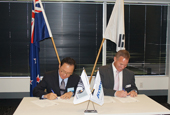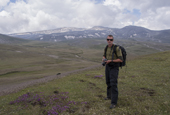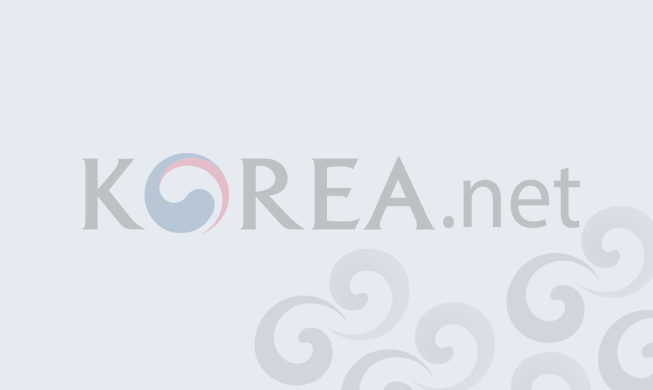President Park Geun-hye and New Zealand Prime Minister John Key announced the completion of bilateral FTA talks in Brisbane, Australia, on November 15, where both leaders were attending the G20 leaders' summit.
"The Korea-New Zealand free trade agreement (FTA) will provide a foundation to further expand and develop bilateral investment and trade, and it also includes various cooperation plans that will develop our bilateral relations. The Korea-New Zealand FTA will allow people of both nations to study or work in the other country, leading to a greater exchange of people, a key factor for the development of bilateral relations. Over 150 Korean youths living in rural areas of Korea will have the chance to study English in New Zealand every year, while 3,000 young Korean adults per year will be given an opportunity to work in New Zealand through its working holiday program. This will allow people from different backgrounds to share the benefits of the FTA. With the signing of this FTA, which is beneficial to both nations, Korea and New Zealand will act as aides to each other to help their economies continue to grow in a volatile international economic environment," said President Park Geun-hye during a joint press conference.
"This FTA has been signed with one of New Zealand's biggest trading partners. Korea is New Zealand's sixth largest export destination for goods and services. Korea is New Zealand's eighth largest source of imports. Two-way trade between the two countries was worth USD 4 billion in the year ending June 2014. This free trade agreement will put New Zealand exporters back on a level playing field with competitors from Korea's other's FTA partners, such as the U.S., Chile and the EU. I can say that what is not included in Korea's FTAs already signed with the EU, the U.S., Australia and Canada is also not included in the Korea-New Zealand FTA. Thus, there will be no need for further adjustments in the long-term process of gradual liberalization. It is a win-win for both Korea and New Zealand," said New Zealand Prime Minister John Key. A deal has now been reached five years and five months after the first negotiations started in June 2009. With this deal, Korea has now sealed FTAs with 31 out of 34 of the other Organization for Economic Co-operation and Development (OECD) nations. Only Japan, Mexico and Israel remain.
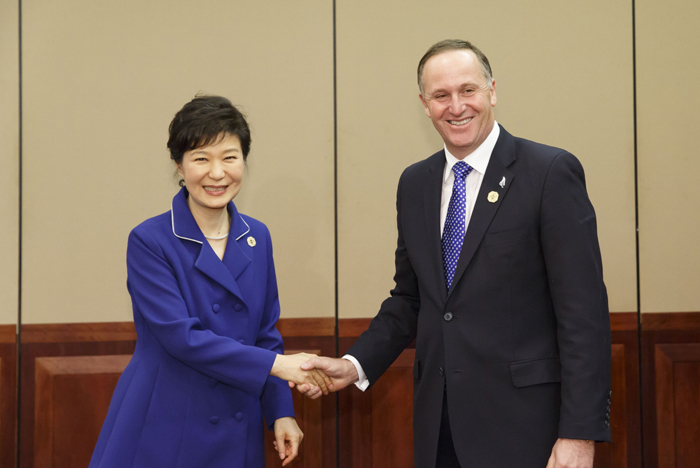
After initialing the FTA, Korea and New Zealand intend to officially sign the deal early next year. It will go into effect as soon as the legislatures of the two nations ratify the deal.
New Zealand will lift tariffs on 92 percent of imports from Korea, in terms of their value, and it will further eliminate duties on 7,288 Korean products over the following seven years. Korea will immediately abolish all tariffs on 48.3 percent of the products it imports from New Zealand in terms of value, out of a total of 11,881 products it imports from New Zealand, and phase out tariffs on more than 96.4 percent of the items over the subsequent 15 years.
However, 194, or 12.9 percent, of the approximate 1,500 farms goods produced in New Zealand, including rice, honey, apples, pears, persimmons and squid, are excluded from the tariff cut.
Whole and skimmed powdered milk, one of New Zealand's biggest export items, will remain within a tariff rate quota (TRQ) equal to 5 percent of a total consumption in Korea. The Korean government put in a safeguard clause for beef, for which tariffs will be phased out over 15 years, to prevent a drastic increase in imports. Under such "safeguard" rules, Korea can raise tariffs or stop a tariff reduction on certain products if there is a concern about damage to the related domestic industry.
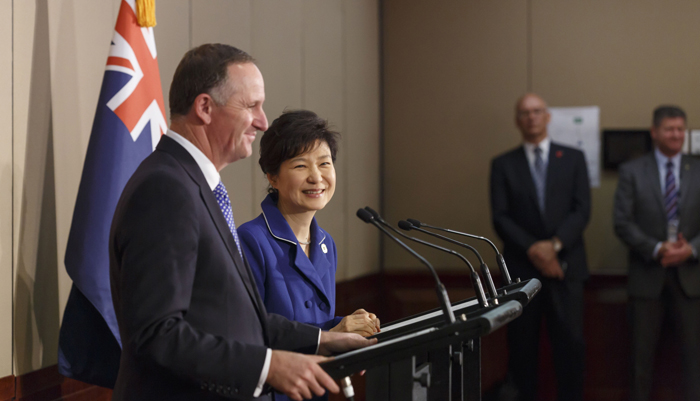
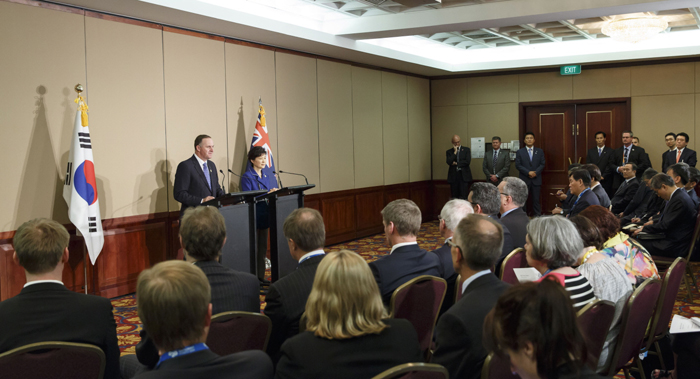
In addition to a reduction of tariffs on goods, the two nations agreed to open the public procurement market and the services sectors, and allow more liberalized investment in each other. They also agreed to adopt an investor-state dispute settlement process and increase the number of working holiday visas from the current 1,800 to 3,000 per annum for Korean youths. The agreement also includes issuing 200 professional visas per year.
By Wi Tack-whan, Limb Jae-un
Korea.net Staff Writers
Photos: Cheong Wa Dae
whan23@korea.kr
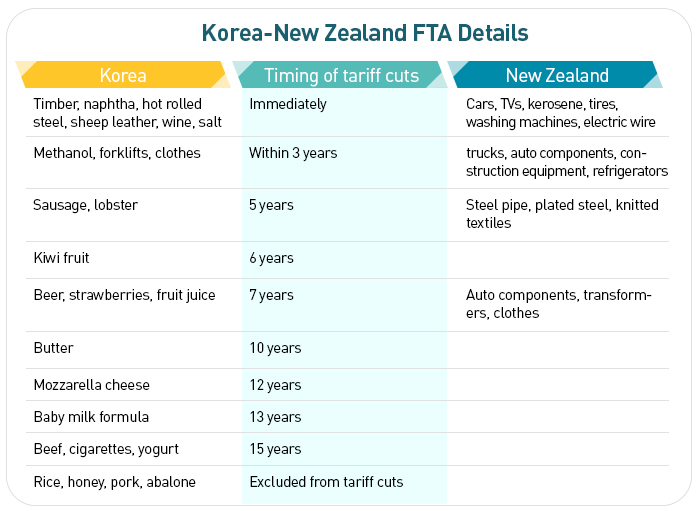
"The Korea-New Zealand free trade agreement (FTA) will provide a foundation to further expand and develop bilateral investment and trade, and it also includes various cooperation plans that will develop our bilateral relations. The Korea-New Zealand FTA will allow people of both nations to study or work in the other country, leading to a greater exchange of people, a key factor for the development of bilateral relations. Over 150 Korean youths living in rural areas of Korea will have the chance to study English in New Zealand every year, while 3,000 young Korean adults per year will be given an opportunity to work in New Zealand through its working holiday program. This will allow people from different backgrounds to share the benefits of the FTA. With the signing of this FTA, which is beneficial to both nations, Korea and New Zealand will act as aides to each other to help their economies continue to grow in a volatile international economic environment," said President Park Geun-hye during a joint press conference.
"This FTA has been signed with one of New Zealand's biggest trading partners. Korea is New Zealand's sixth largest export destination for goods and services. Korea is New Zealand's eighth largest source of imports. Two-way trade between the two countries was worth USD 4 billion in the year ending June 2014. This free trade agreement will put New Zealand exporters back on a level playing field with competitors from Korea's other's FTA partners, such as the U.S., Chile and the EU. I can say that what is not included in Korea's FTAs already signed with the EU, the U.S., Australia and Canada is also not included in the Korea-New Zealand FTA. Thus, there will be no need for further adjustments in the long-term process of gradual liberalization. It is a win-win for both Korea and New Zealand," said New Zealand Prime Minister John Key. A deal has now been reached five years and five months after the first negotiations started in June 2009. With this deal, Korea has now sealed FTAs with 31 out of 34 of the other Organization for Economic Co-operation and Development (OECD) nations. Only Japan, Mexico and Israel remain.

President Park Geun-hye (left) and New Zealand Prime Minister John Key shake hands before a bilateral summit in Brisbane, Australia, on November 15.
After initialing the FTA, Korea and New Zealand intend to officially sign the deal early next year. It will go into effect as soon as the legislatures of the two nations ratify the deal.
New Zealand will lift tariffs on 92 percent of imports from Korea, in terms of their value, and it will further eliminate duties on 7,288 Korean products over the following seven years. Korea will immediately abolish all tariffs on 48.3 percent of the products it imports from New Zealand in terms of value, out of a total of 11,881 products it imports from New Zealand, and phase out tariffs on more than 96.4 percent of the items over the subsequent 15 years.
However, 194, or 12.9 percent, of the approximate 1,500 farms goods produced in New Zealand, including rice, honey, apples, pears, persimmons and squid, are excluded from the tariff cut.
Whole and skimmed powdered milk, one of New Zealand's biggest export items, will remain within a tariff rate quota (TRQ) equal to 5 percent of a total consumption in Korea. The Korean government put in a safeguard clause for beef, for which tariffs will be phased out over 15 years, to prevent a drastic increase in imports. Under such "safeguard" rules, Korea can raise tariffs or stop a tariff reduction on certain products if there is a concern about damage to the related domestic industry.


President Park Geun-hye (right) and New Zealand Prime Minister John Key announce the completion of a free trade agreement and participate in a press conference.
In addition to a reduction of tariffs on goods, the two nations agreed to open the public procurement market and the services sectors, and allow more liberalized investment in each other. They also agreed to adopt an investor-state dispute settlement process and increase the number of working holiday visas from the current 1,800 to 3,000 per annum for Korean youths. The agreement also includes issuing 200 professional visas per year.
By Wi Tack-whan, Limb Jae-un
Korea.net Staff Writers
Photos: Cheong Wa Dae
whan23@korea.kr

